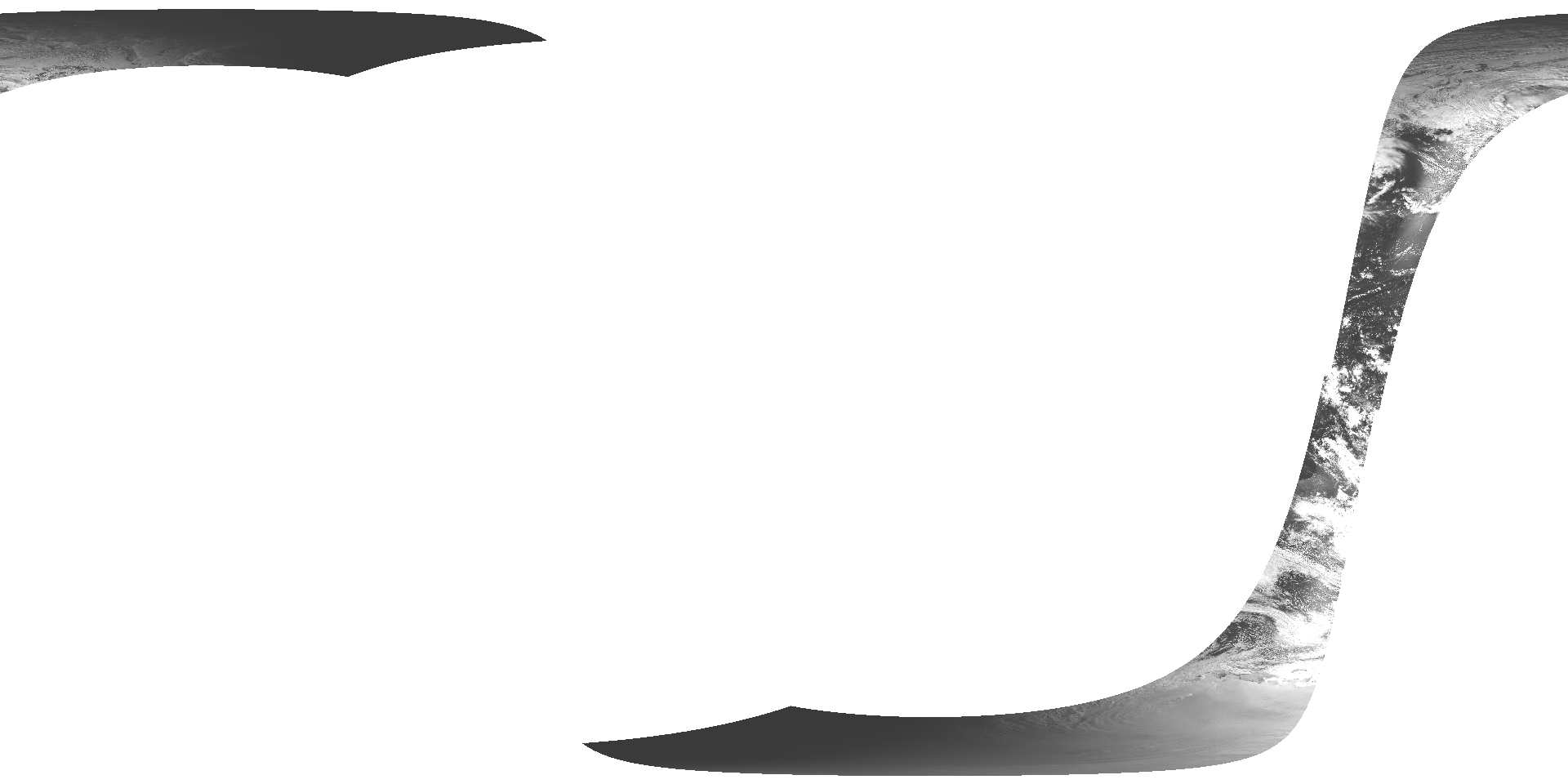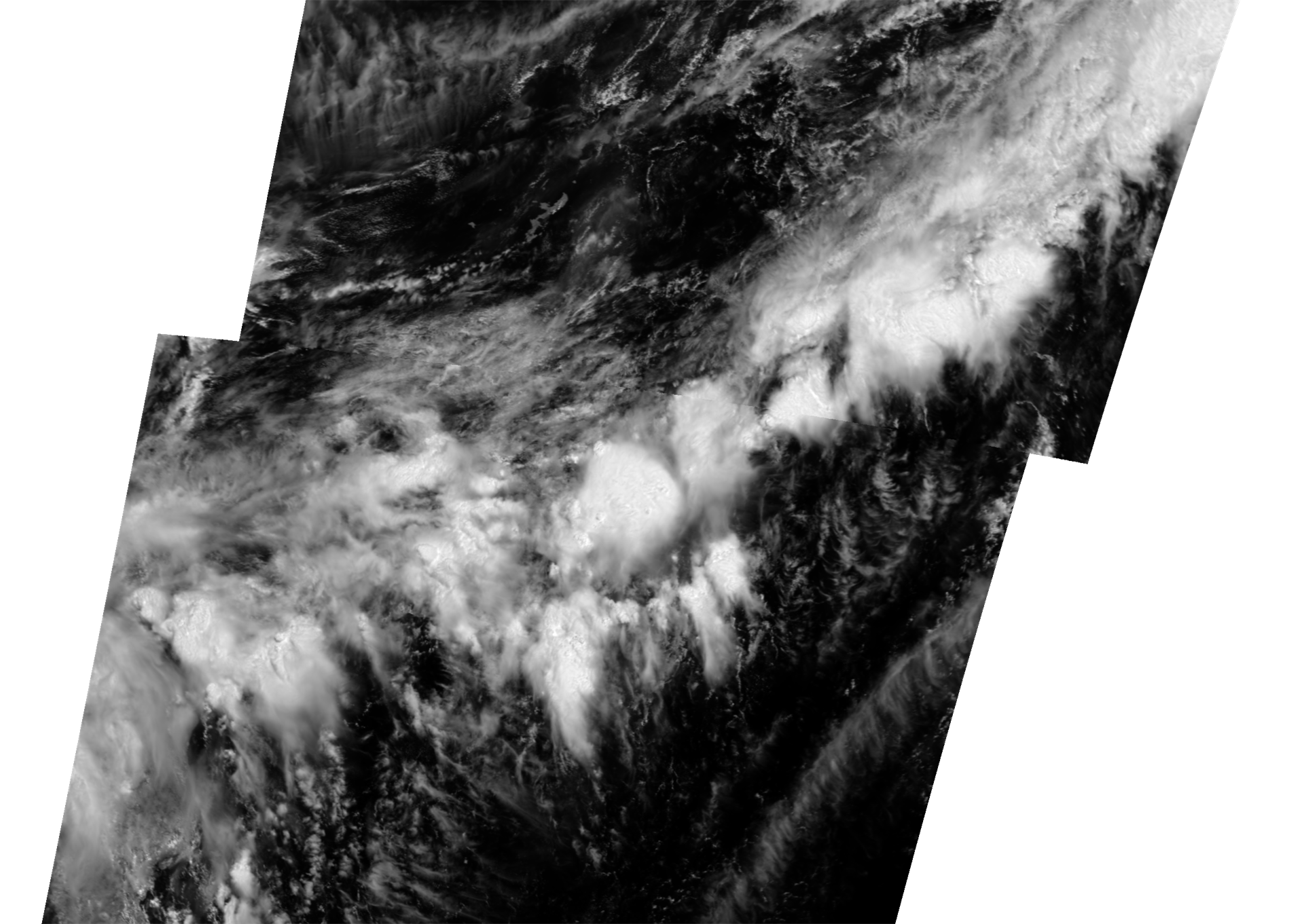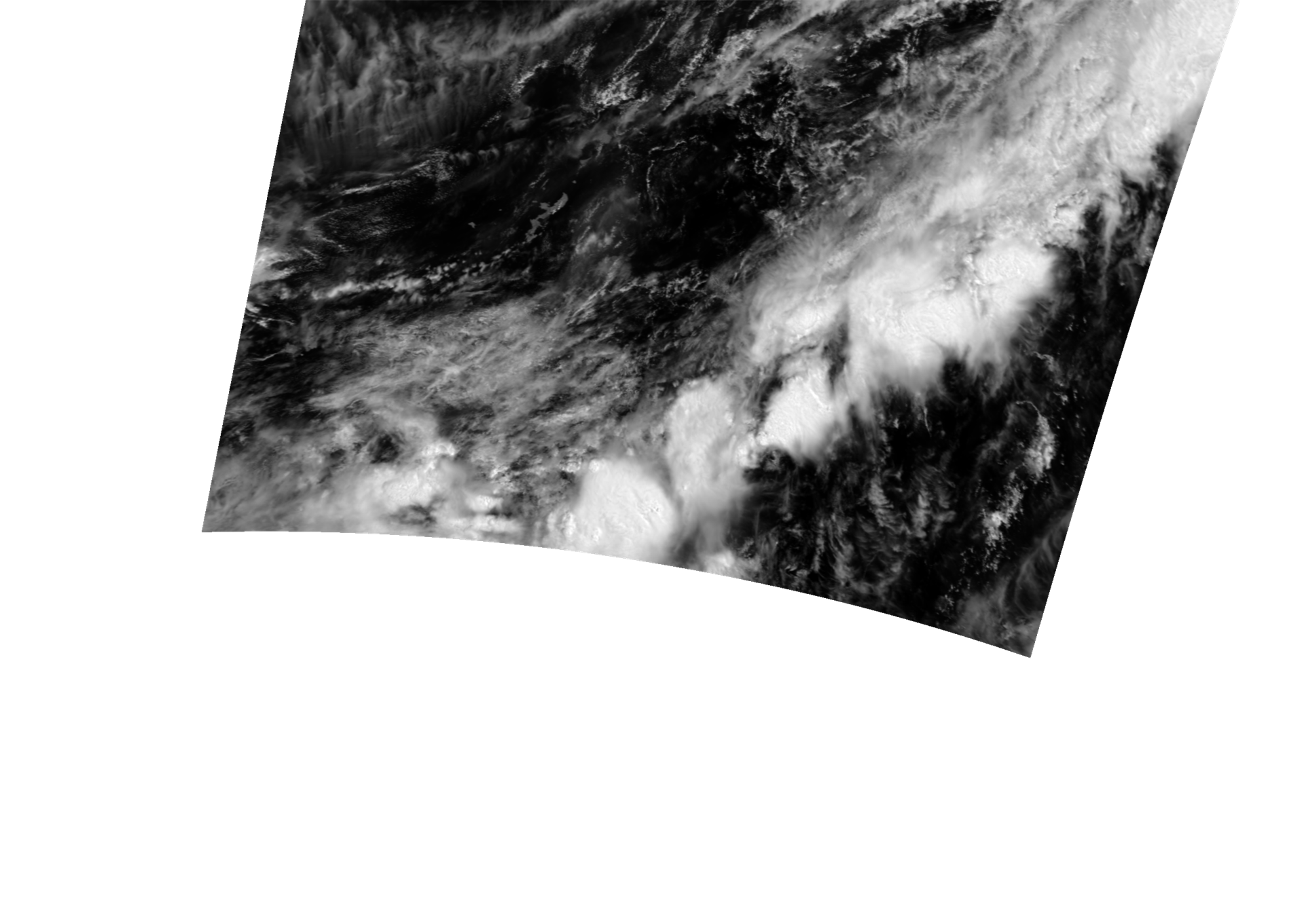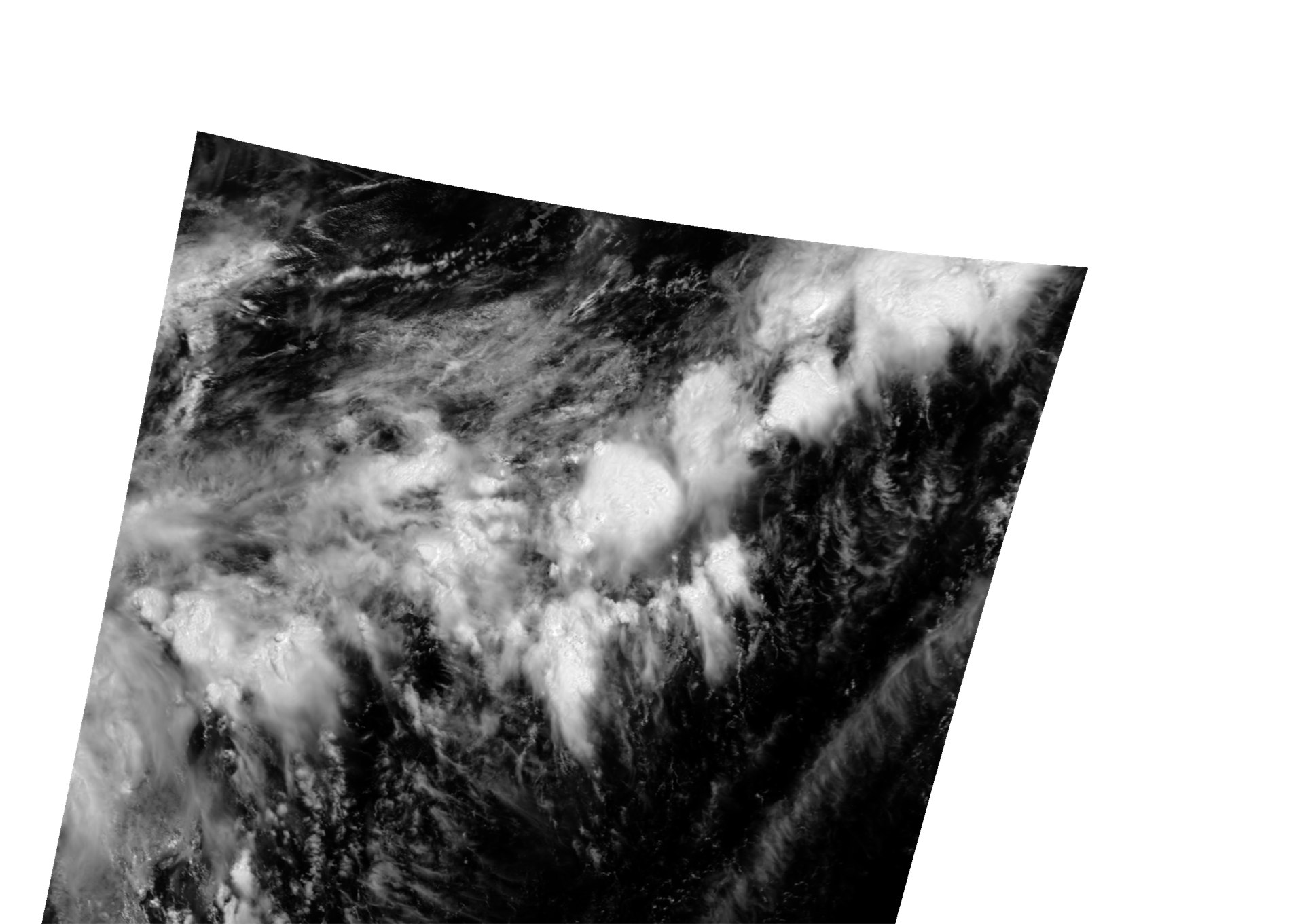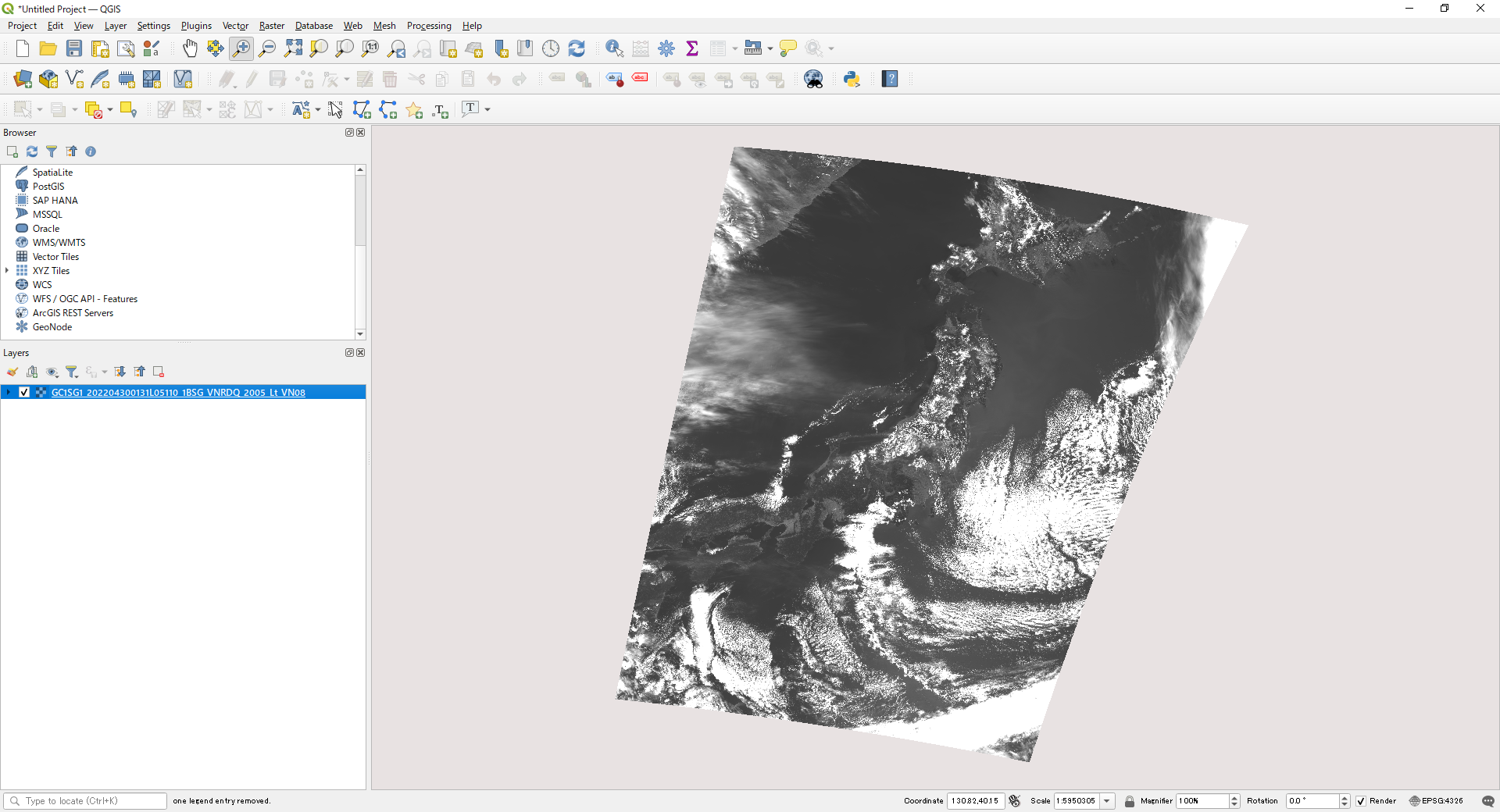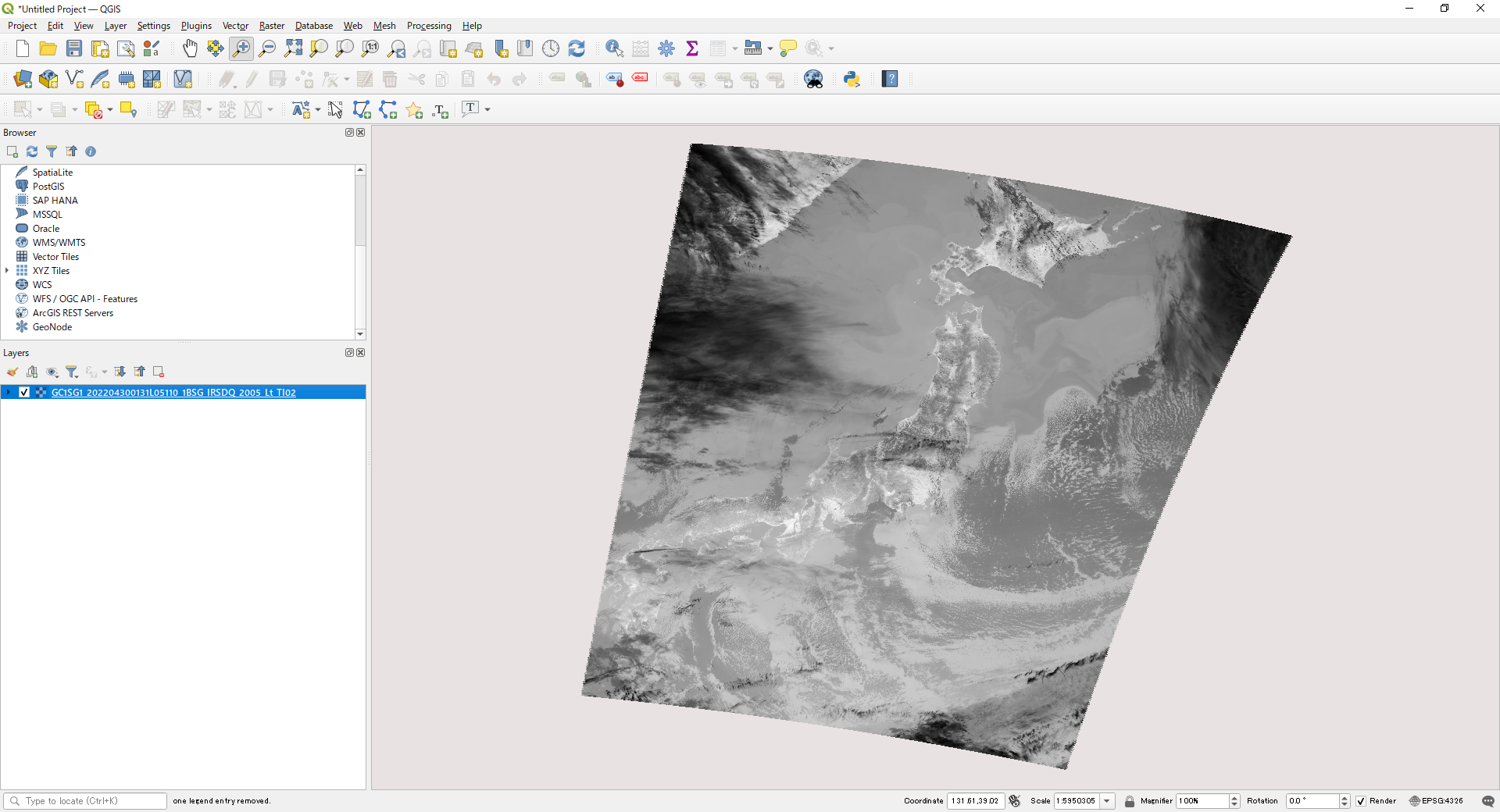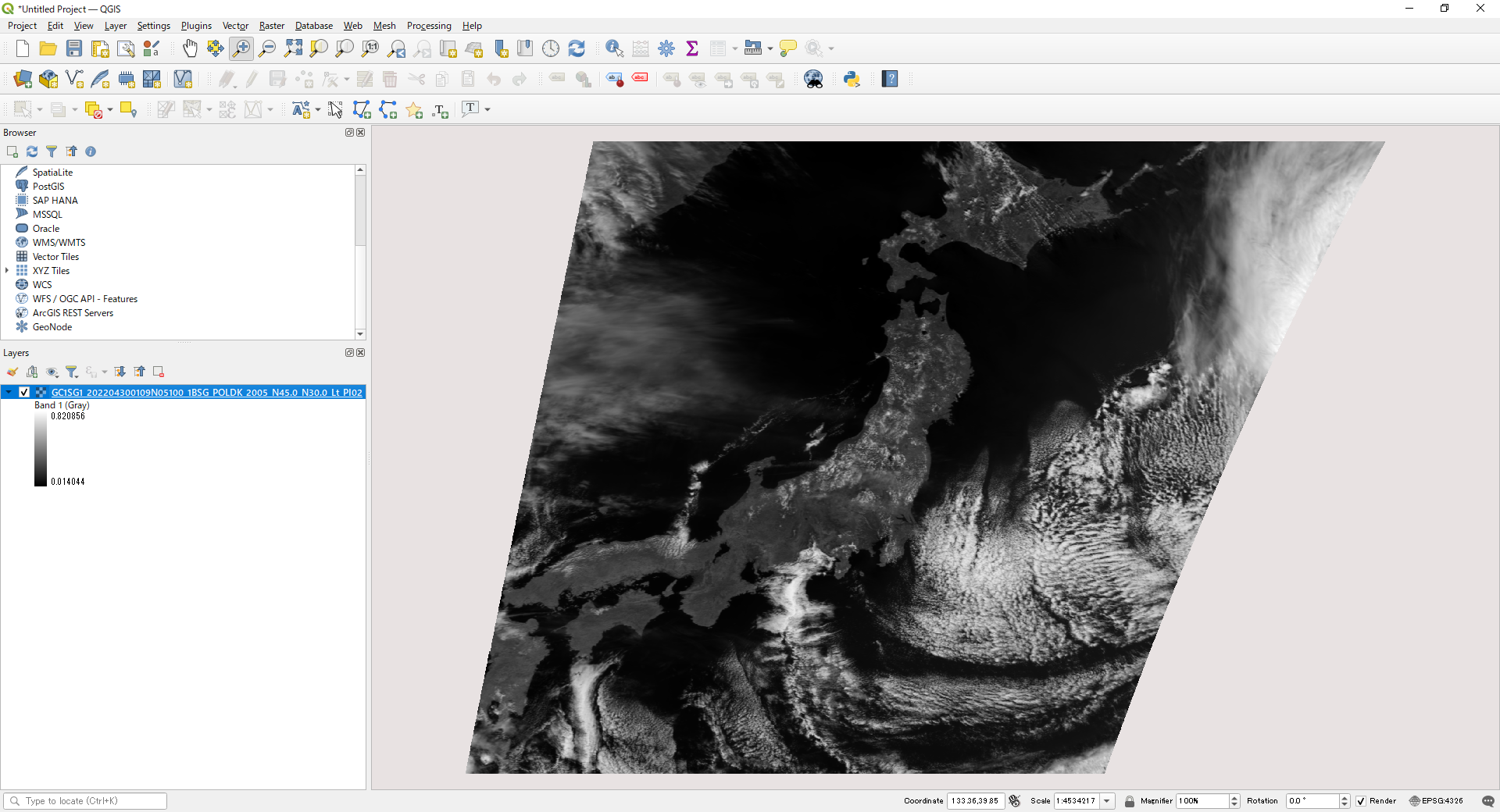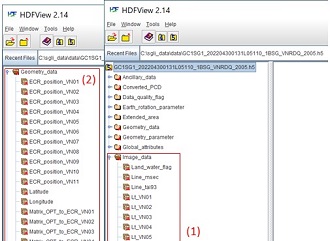- TOP >
- SHIKISAI GeoTIFF >
- SHIKISAI GeoTIFF-Level1B
SHIKISAI GeoTIFF-Level1B | Atmosphere | Cryosphere | Land | Ocean
Level-1B Products
Level 1B products are provided in HDF5 files for each of Visible-Near Infrared (non-polarization)/VNR-NP, Visible-Near Infrared (polarization)/VNR-PL, and Short Wavelength Infrared (Thermal Infrared)/IRS (SWI+TIR).
This section describes how to convert HDF5 Level-1B products obtained from G-Portal into map projection images and output them as GeoTIFF files.
The following methods are available to use SHIKISAI Level 1B data in GeoTIFF files.
* How to convert standard data obtained from G-Portal
- -CUI: SGLI Map projection & GeoTIFF conversion tool (The link to the download site is provided from "Tools used" below.)
- -GUI: Earth Observation Data Conversion Tool(Click on the tool name to go to the download page)
* How to obtain GeoTIFF from G-Portal processing requests
- Request processing of GeoTIFF data from the "Processing" button in the data search results.
- Please refer to the following FAQs for the products covered.
- https://shikisai.jaxa.jp/faq/faq0044.html
Tools
This section provides examples of GeoTIFF conversions using the following tools.
Click on the tool name to go to the download page.
| Target product | Tool name | |
|---|---|---|
Level-1B(L1B) VNR/IRS/POL |
SGLI Map projection & GeoTIFF conversion tool |
Link to the "Tools & Documents" page in G-Portal. Platforms: Windows, Linux |
Level-1B(L1B) VNR/IRS/POL For confirmation of SD array (data set name) |
QGIS(Quantum GIS)/gdal | Link to an external site. Platforms: Windows, Linux |
Example of GeoTIFF output from the "SGLI Map projection & GeoTIFF conversion tool" and displayed in QGIS.
Descending (D) / Daytime image (VNR, POL, IRS)
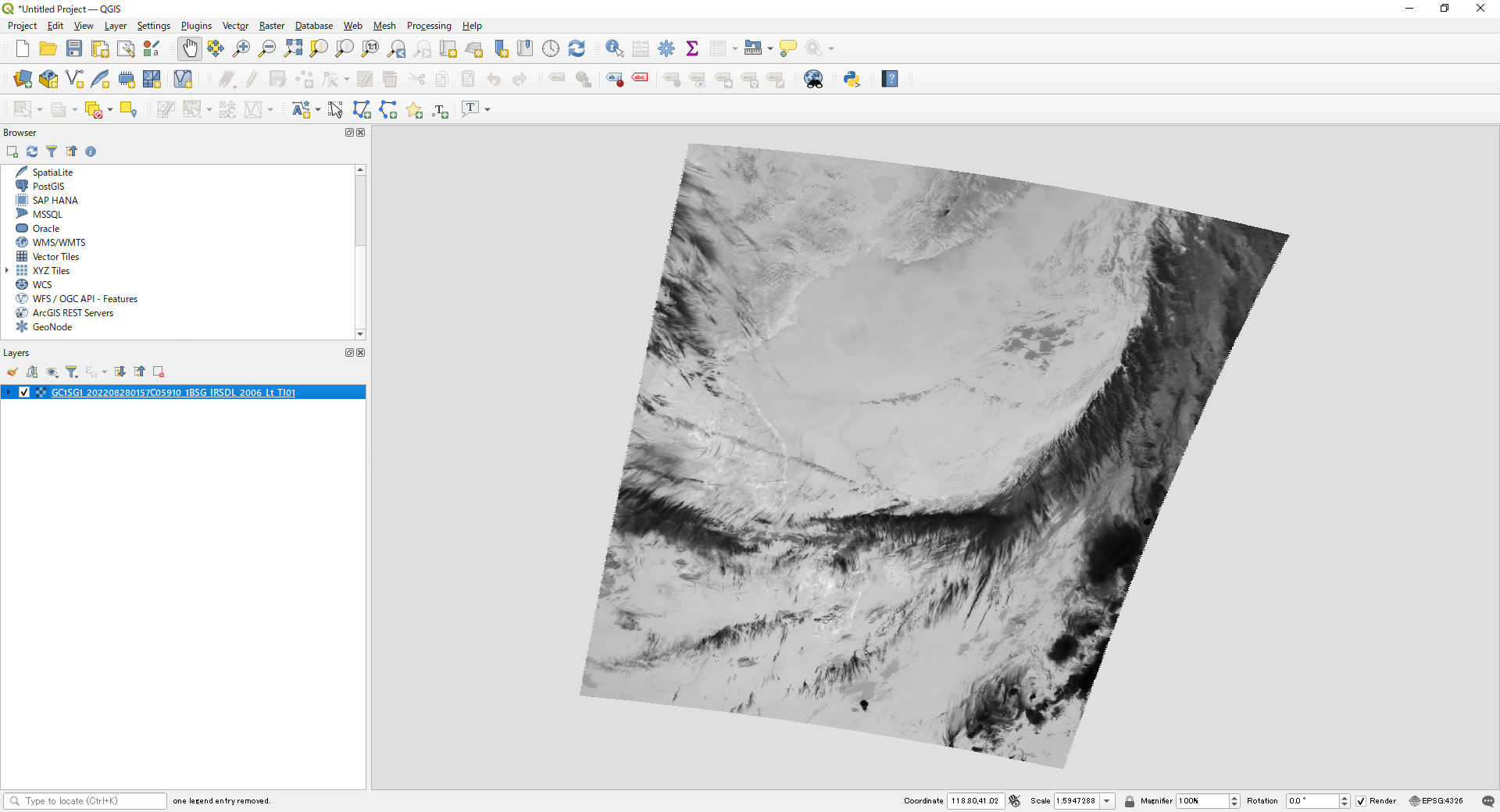
Ascending (A) / Nighttime image (IRS)
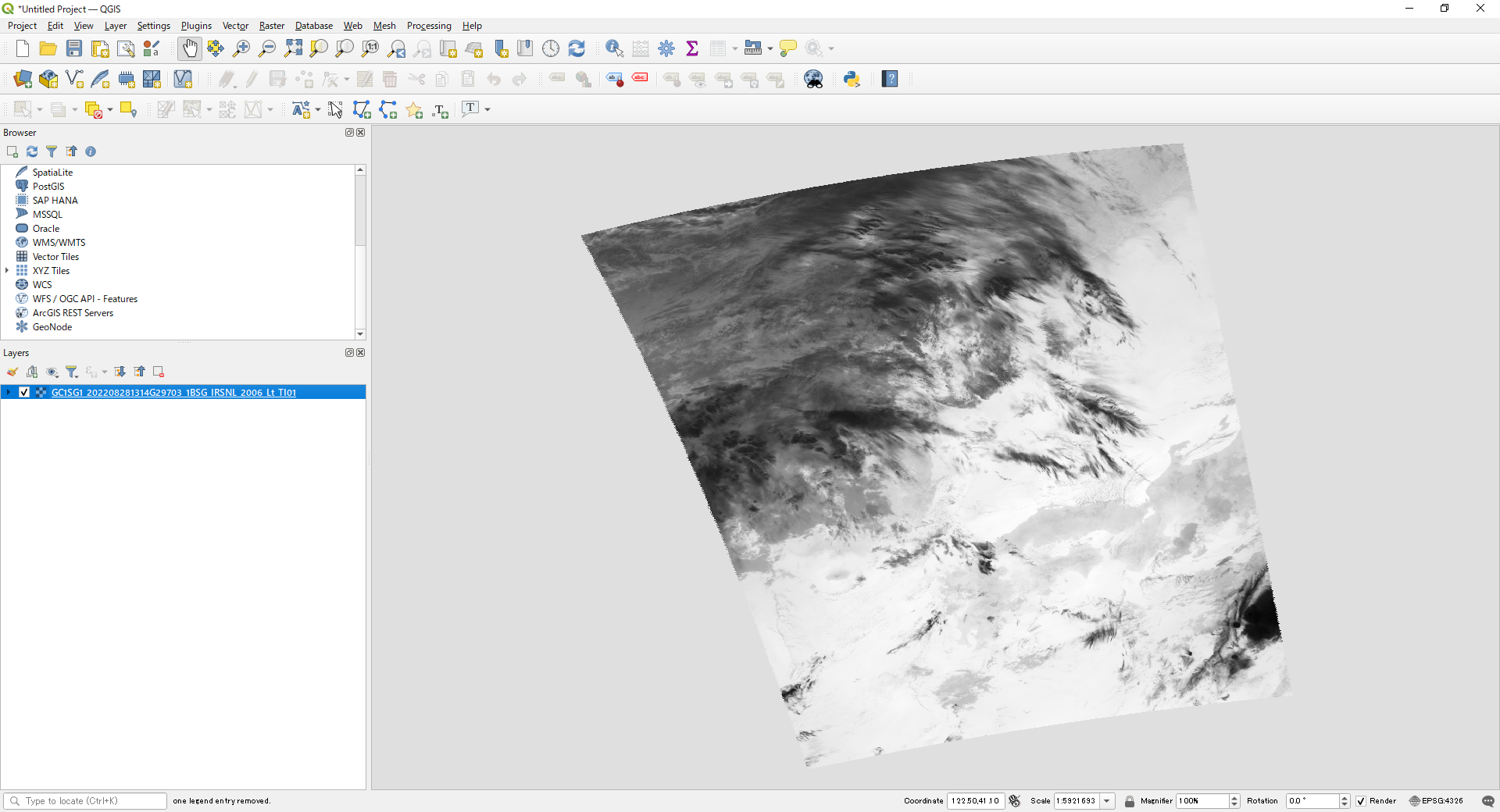
180deg crossing (default: Geodetic Lat/Long)
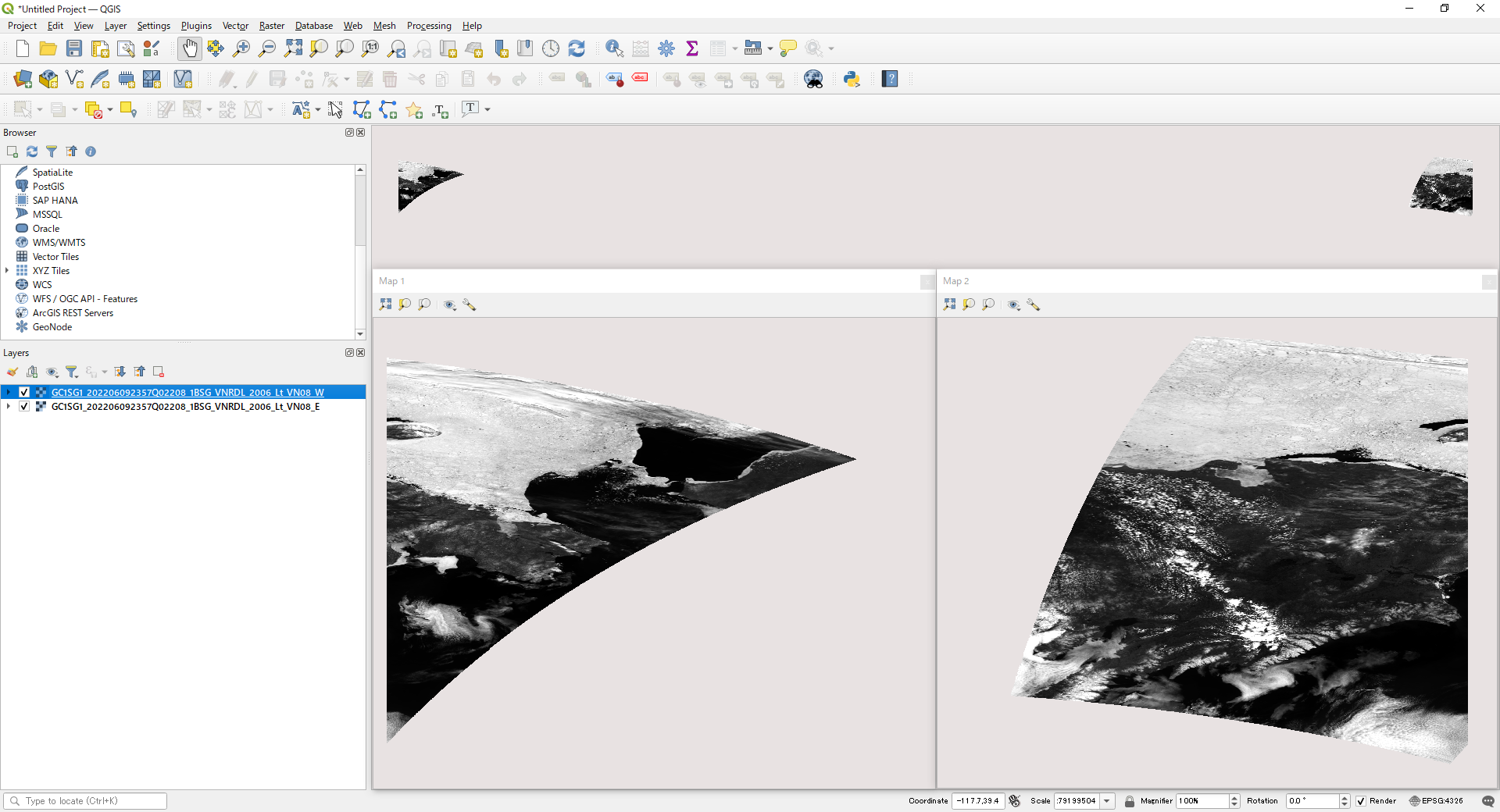
180deg crossing (Polar-Stereo (PS))
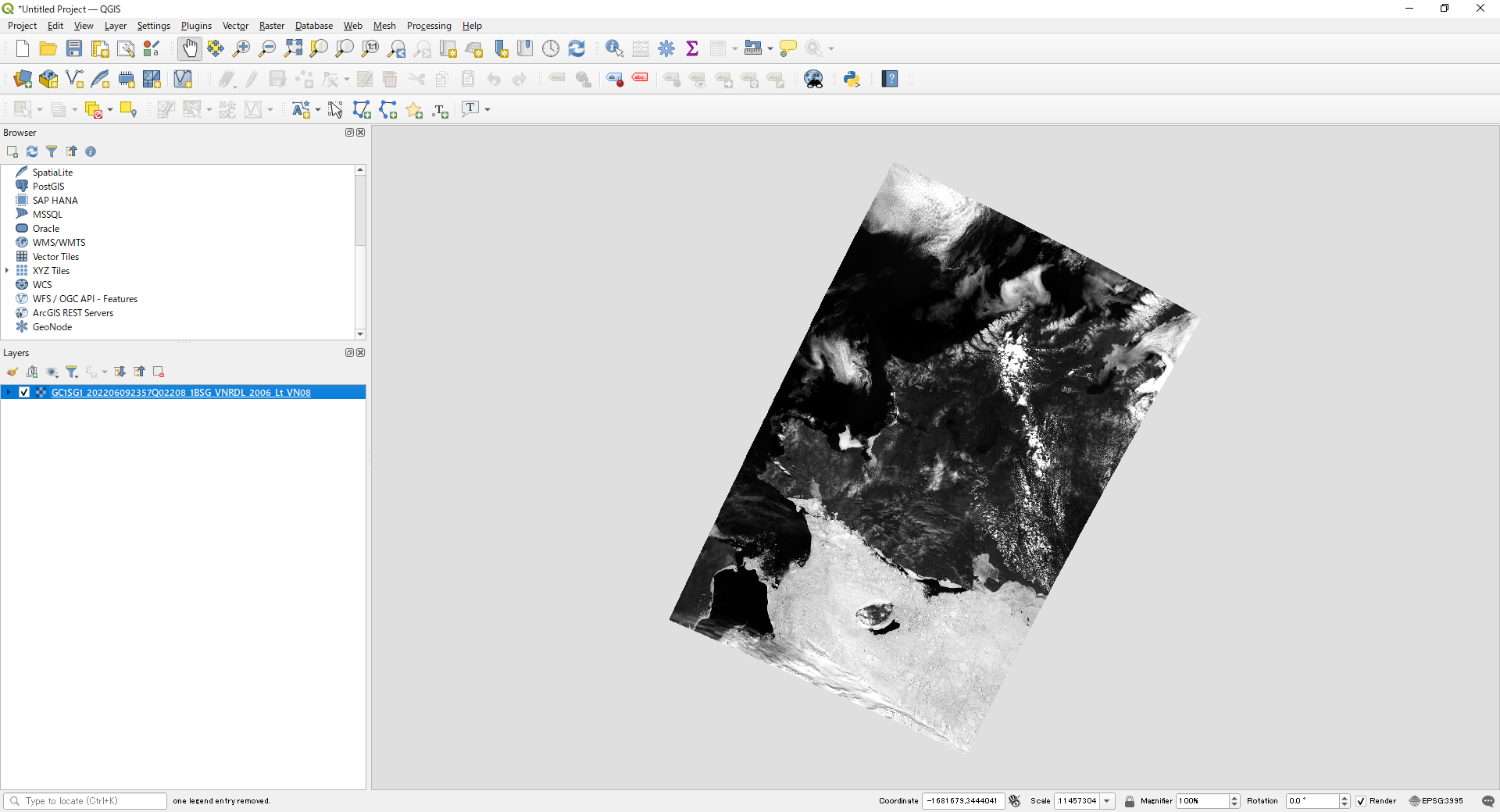
Polar area (default: Geodetic Lat/Long)
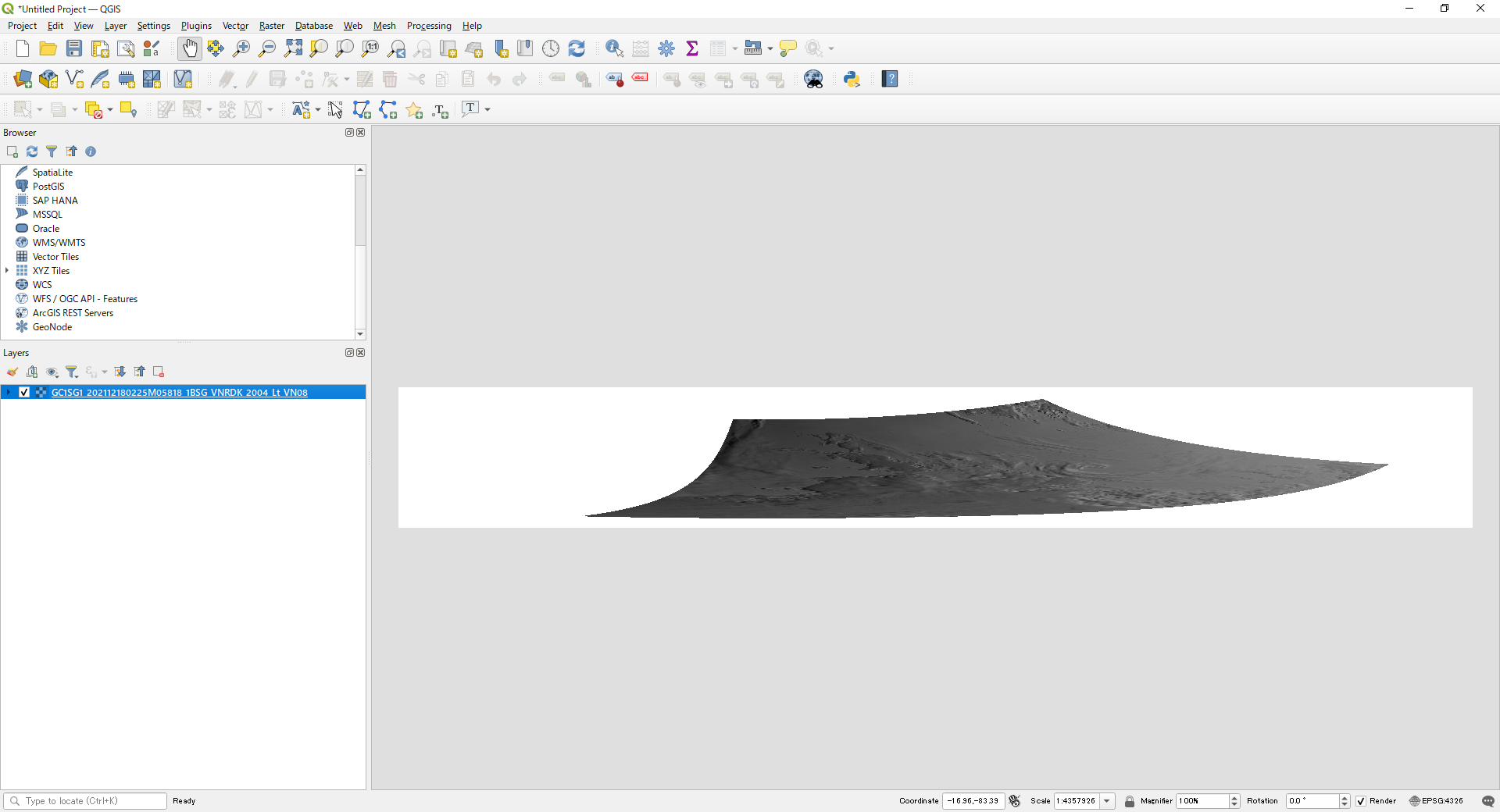
Polar area (Polar-Stereo (PS))
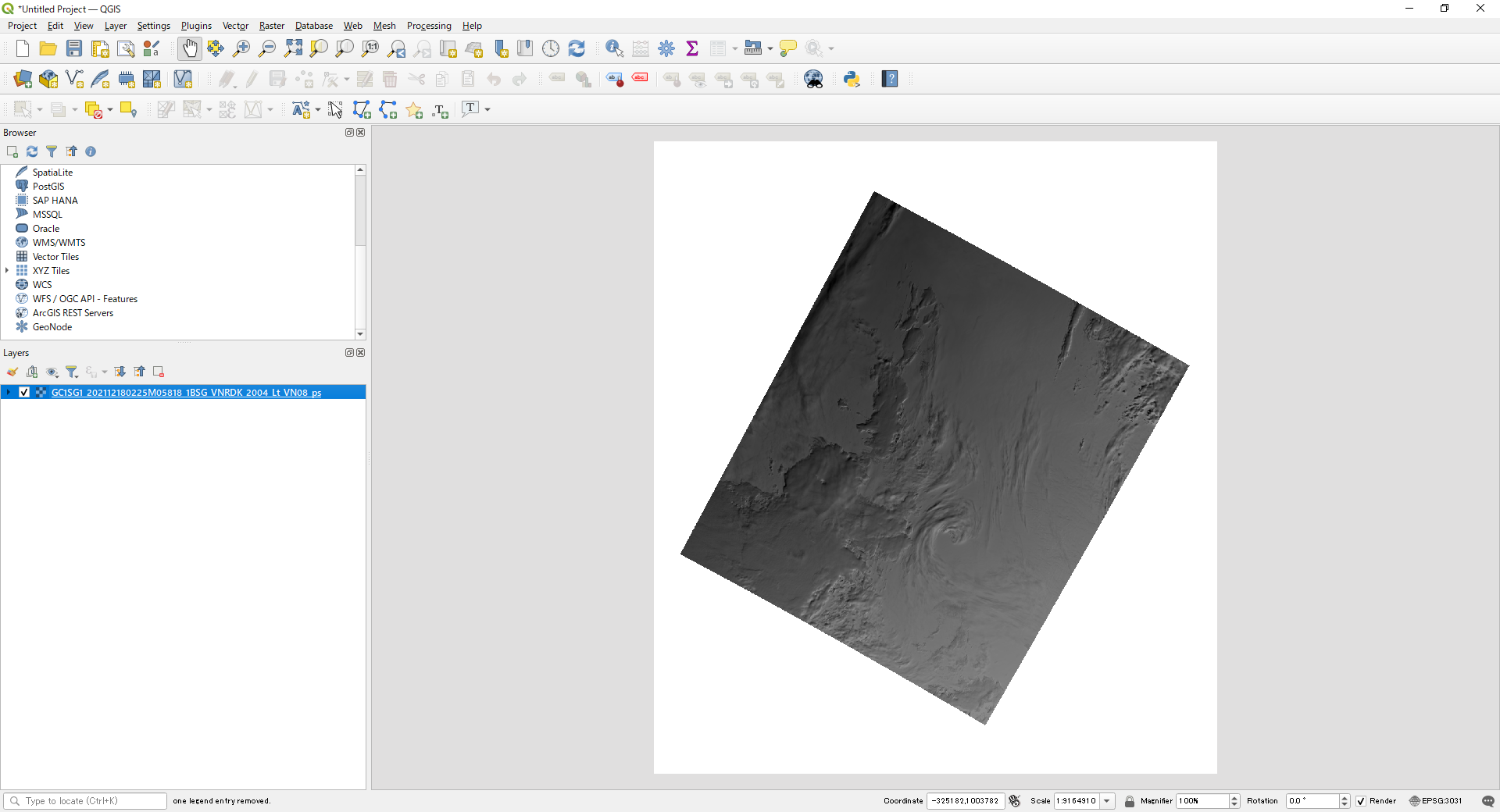
This section explains converting a GeoTIFF file using the "Tools used" above and the HDF5 sample data below.
Data used in the explanation
Please obtain the following data from G-Portal.
Level-1B VNR:
Observed 04/30/2022 Around Japan Daytime
GC1SG1_202204300131L05110_1BSG_VNRDQ_2005.h5(665MB)
Level-1B IRS:
Observed 04/30/2022 Around Japan Daytime
GC1SG1_202204300131L05110_1BSG_IRSDQ_2005.h5(183MB)
Level-1B POL:
Observed 04/30/2022 Around Japan Daytime
GC1SG1_202204300109N05100_1BSG_POLDK_2005.h5(670MB)
